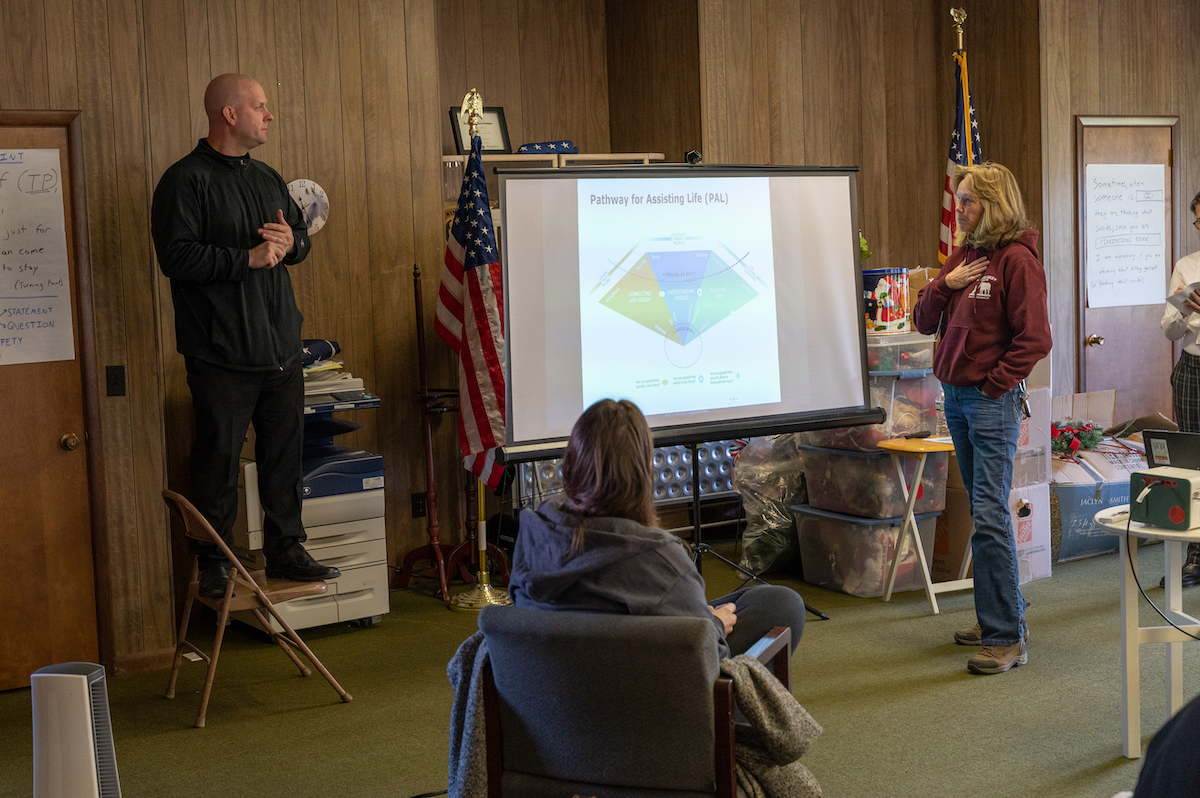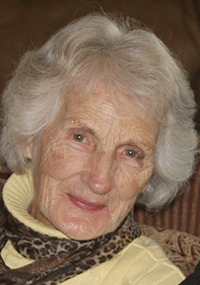

[ad_1]

Twenty first responders, health care workers and veterans’ advocates gathered in a classroom-style setting in Calverton last Tuesday and Wednesday to learn skills that could potentially save lives.
Warrior Ranch, a Calverton-based not-for-profit which offers equine therapy for veterans, first responders and their families, hosted a two-day ASIST — Applied Suicide Intervention Skills Training — course developed by LivingWorks, a company founded in 1983 that provides suicide prevention training to communities and organizations. Stony Brook Eastern Long Island Hospital and the Center for Suicide Prevention of New York sponsored the event.
Over the two days, SBELIH chief nursing officer and senior vice president of patient care Suzie Marriott and Suffolk County Police officer and peer support coordinator Philip Schoppmann delivered lectures and led the group through exercises designed to best prepare them for real-world suicide prevention scenarios.
For some participants, suicide intervention is nothing new. However, LivingWorks’ “Pathway for Assisting Life,” or PAL model, which Ms. Marriott and Mr. Schoppmann discussed, was a new tool emergency responders may soon start using.
The PAL model entails evaluating whether someone might be experiencing suicidal ideation, asking if this is in fact the case, conversing with them to learn their story and find a “turning point,” or a reason they have to live, asking them to agree to stay safe for right now because of this turning point and working on a safety plan, which often includes reaching out to loved ones who could support their choice to stay safe.
“I’m a social worker, I’ve dealt with clients in many different settings and different capacities that have been experiencing suicidal ideation for a long time,” Kaitlyn Wright, a psychiatric social worker for Stony Brook University Hospital, said during a break in the lecture last Wednesday. “[Typically] you’re asking this laid-out set of questions to people, but this kind of rearranges it in a way that makes it more of a conversation.”
“We’re taught to say ‘Are you suicidal? Let’s make a plan to keep you safe,’ ” her coworker Anika Janssen added. “This is more of a comprehensive way of digging deep and getting the person to actually agree to safety rather than going through steps.”
Mr. Schoppmann began his career in mental health shortly after he joined the New York Police Department in 2007 as a police officer. He became a peer support specialist who identified and responded to fellow officers experiencing suicidal ideation. He continued this work after he transferred to the Suffolk County Police Department in 2010, where he now serves as both an officer and a peer support coordinator. He has seen suicide prevention training evolve over the years and continues to bolster his knowledge base with new ideas and techniques.
“In the olden days you would just get the person to agree that they wouldn’t hurt themselves,” he said. “Just having someone agree to that is not enough.”
Through the PAL model, he explained, those looking to intervene should gather as much information as they possibly can from someone thinking of suicide. This means not only finding someone’s turning point, but the details of their ideation to create a strong safety plan.
“It creates a list a person can look at so they know what they can avoid, what they can do, who can help, how they can help,” he explained. “It’s a detailed plan on what to do when feelings [of suicide] get stronger … In that framework, we look at what the plan [to attempt suicide] is — if that person even has a plan — and how we can disable or disrupt that plan.”
Ms. Marriott has dedicated more than a decade to mental health as a volunteer suicide prevention trainer for the Center for Suicide Prevention of New York. She said she has taught LivingWorks’ ASIST program in America and overseas. While she believes such courses are important for as many people to learn as possible, she said it’s critical to reach communities like those gathered at Warrior Ranch last week.
“Police, veterans, health care workers, first responders, we know they’re all high risk for suicide,” she said. “They help people and they may also come into contact with suicide in their personal lives.”
After declining in 2019 and 2020, suicide deaths increased approximately 5% in the United States in 2021 and an additional 2.6% in 2022, according to the Centers for Disease Control and Prevention. Approximately 49,449 Americans died by suicide last year. According to the most recent National Veteran Suicide Prevention Annual Report, 6,146 veterans committed suicide in 2020, an average of nearly 17 per day.
Eileen Shanahan, who started Warrior Ranch out of her love of both country and horses and hopes to bolster its ability to provide mental health education and services, knows this all too well.
“We asked them to come here and work with some folks from Warrior Ranch because we deal with folks with [post-traumatic stress disorder],” Ms. Shanahan said. “I think it’s important that we the coaches and the people around here know the signs of someone who may have suicide on their mind and how to intervene to get them help.
“It’s very important that we have this skill here at Warrior Ranch,” she continued. “It’s also very important that the education gets out there because there are mental health issues today that are more widespread. The suicide rate is high, especially post-COVID-19 it’s even worse. If people can be educated on how to deal with somebody in a situation like this so they don’t get to the point of suicide, I think that is vital to our community.”
Anyone experiencing thoughts of suicide is encouraged to dial 988 to access The National Suicide Prevention Lifeline.
[ad_2]
Source link
24World Media does not take any responsibility of the information you see on this page. The content this page contains is from independent third-party content provider. If you have any concerns regarding the content, please free to write us here: contact@24worldmedia.com

Large part of Lynn Woods remains closed

Swampscott water tests lead-free – Itemlive

Mother needs help providing the Christmas experience

A cheerful fundraiser for Saugus team

Carl Daniel Reiter – The Suffolk Times

Joan Ann (Woessner) Polywoda – The Suffolk Times

Thomas L. Lewick – The Suffolk Times

Jeanette Howard – The Suffolk Times

Nina Mazzaferro – The Suffolk Times

Lynn mayor announces re-election bid

BARRETT: They ate plenty – Itemlive

Brooke Moloney, the Minutewoman – Itemlive